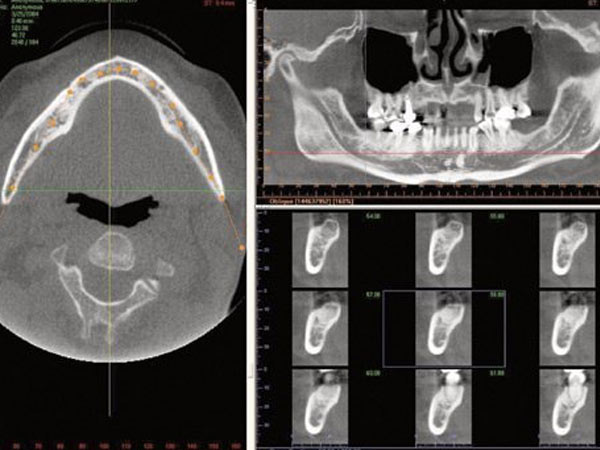A CT (computed tomography) scan, also called a CAT (computerized axial tomography) scan, is a diagnostic aid used to obtain three-dimensional images of various body structures. It is a specialized kind of X-ray which is of high diagnostic value because of its clarity and accuracy. Many dental professionals use this type of scan in conjunction with diagnosing and treating their patients.
Uses in Dentistry:
- With the help of a CT scan, a dentist is able to determine the exact location and size of a tumor and provide medication or treatment accordingly. Hence it is imperative in the diagnosis of oral cancers.
- It is essential for determining the density of the jaw bones before proceeding with dental implants. A CT scan is the most helpful diagnostic tool for these cases, as the images are precise and have no overlapping images, like there are in conventional radio graphs.
- It helps in the diagnosis of temporomandibular joint disorders and impacted teeth
- It is used for cephalometric analysis
- It serves a major role in reconstructive surgery
- It can be used to evaluate the nasal cavity, jaws, sinuses and nerve canals.
Benefits of CT Scans When Used In Dentistry:
- It provides clear internal anatomy
CT scans are extremely accurate, and there is no overlapping of images or distortion of images. The dentist is able to view the structures with utmost clarity and decide a precise treatment plan.
- It has a quick image production
Within a matter of a few seconds, the image of the structure is obtained and can be viewed comfortably on a monitor.
- You can obtain a view from various points and angles
The images produced are of three-dimensional form. Hence, they can be viewed from various points and angles. This is one of the biggest advantages of a CT scan when compared to a conventional intraoral or panoramic radiograph.
- It allows pre-planning in dental implants, therefore limiting surprises
CT scans play a very important role in dental implant surgery. The success of a dental implant relies on the degree of osseointegration, or put simply, the extent of fusion of the implant to the surrounding bone. The determination of the quality and the quantity of underlying bone is a crucial step in this procedure. CT scans provide the exact dimensions which help the dentist to decide if the bone is strong enough to support an implant. Furthermore, an implantologist is able to prepare a surgical template prior to the implant surgery on the basis of the image obtained through CT scan. This template acts as a guide for the insertion of the dental implants.
- Bone and soft tissue can be viewed at the same time
CT scan can be used for the visualization of both hard tissues like bone, and soft tissues like tumors.
- It’s a non-invasive procedure
This is a non-invasive diagnostic procedure. Hence, it is painless and quite comfortable for the patient.
Our team at Cascades Dental strives hard to deliver the best to you. We have a CT available at our office so that we can always provide the highest level of care to our patients. We understand how important your smile is for you! That is why your dental needs are our top priority.


